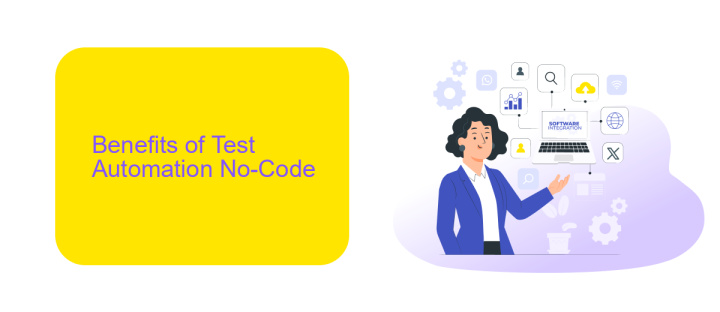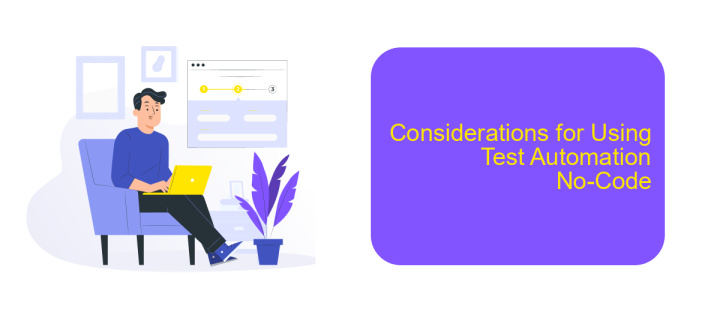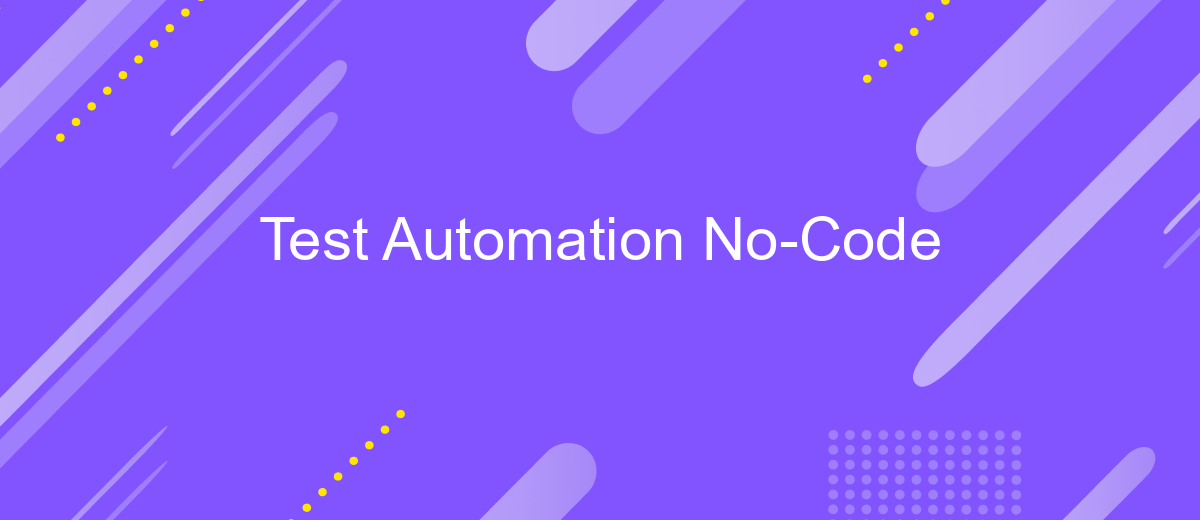Test Automation No-Code
In today's fast-paced software development environment, test automation has become indispensable for ensuring quality and efficiency. No-code test automation platforms are revolutionizing the industry by enabling even non-technical users to create, execute, and manage automated tests. This article explores the benefits, challenges, and key features of no-code test automation, and how it is reshaping the landscape of software testing.
Introduction to Test Automation No-Code
Test automation no-code is revolutionizing the software testing landscape by enabling individuals with minimal coding skills to create, execute, and manage automated tests. This approach democratizes test automation, making it accessible to a broader audience, including business analysts and QA professionals who may not have extensive programming knowledge.
- Ease of Use: No-code platforms offer intuitive drag-and-drop interfaces.
- Cost-Effective: Reduces the need for highly specialized developers.
- Faster Time to Market: Speeds up the testing process and product delivery.
- Scalability: Easily scale your testing efforts without extensive coding.
One of the tools that can enhance your no-code test automation experience is ApiX-Drive. ApiX-Drive simplifies the integration of various applications and services, allowing you to automate workflows seamlessly. By leveraging such tools, you can ensure that your test automation processes are not only efficient but also highly integrated with your existing systems, further streamlining your development and testing lifecycle.
Benefits of Test Automation No-Code

Test automation no-code offers numerous benefits, making it an attractive solution for businesses of all sizes. One of the primary advantages is the significant reduction in time and resources required to develop and maintain automated tests. By eliminating the need for extensive coding knowledge, teams can quickly create, modify, and execute tests, leading to faster feedback cycles and improved software quality. This approach democratizes test automation, allowing non-technical team members to contribute effectively, thus fostering greater collaboration and efficiency within the organization.
Another key benefit is the ease of integration with various tools and platforms. Services like ApiX-Drive facilitate seamless connectivity between different systems, enabling automated workflows without the need for complex programming. This not only streamlines the testing process but also ensures that all components of the software ecosystem are working harmoniously. Additionally, no-code test automation platforms often come with user-friendly interfaces and pre-built templates, further simplifying the setup and execution of tests. This leads to a more agile and responsive testing environment, ultimately driving better business outcomes.
How Does Test Automation No-Code Work?

Test Automation No-Code platforms simplify the process of automating tests by allowing users to create, manage, and execute tests without writing any code. These platforms are designed to be user-friendly and accessible to non-developers, making test automation more inclusive and efficient.
- Drag-and-drop Interface: Users can create test cases using a visual interface that involves dragging and dropping elements.
- Pre-built Templates: These platforms offer a variety of pre-built templates to quickly set up common test scenarios.
- Integration with Other Tools: No-code platforms can integrate with other tools and services, such as ApiX-Drive, to streamline workflows and enhance test capabilities.
- Automated Test Execution: Tests can be scheduled and executed automatically, reducing the need for manual intervention.
- Real-time Reporting: Users receive real-time feedback and detailed reports on test outcomes, helping to identify and resolve issues promptly.
By leveraging no-code test automation tools, organizations can significantly reduce the time and effort required for testing, allowing teams to focus on more strategic tasks. Integrations with services like ApiX-Drive further enhance the automation process by enabling seamless data flow and interaction between different systems.
Considerations for Using Test Automation No-Code

When considering the use of no-code test automation tools, it is essential to evaluate both the benefits and potential limitations. These tools can significantly reduce the time and effort required for test creation and maintenance, making them an attractive option for teams with limited coding expertise.
However, there are several factors to keep in mind to ensure successful implementation. One of the key considerations is the complexity of the applications being tested. No-code tools may struggle with more intricate scenarios, requiring a balance between ease of use and the depth of testing capabilities.
- Evaluate the compatibility of the no-code tool with your existing technology stack.
- Consider the level of customization and flexibility offered by the tool.
- Assess the learning curve for team members and the availability of support and documentation.
- Check for integration capabilities with other services, such as ApiX-Drive, to streamline workflows.
Ultimately, the choice to use no-code test automation should align with your team's specific needs and project requirements. By carefully weighing these considerations, you can make an informed decision that enhances your testing processes without compromising on quality.


Conclusion
In conclusion, no-code test automation is revolutionizing the way businesses approach software testing. By enabling non-technical users to create, execute, and manage tests, it democratizes the testing process, making it more accessible and efficient. This shift not only reduces the dependency on specialized developers but also accelerates the delivery of high-quality software products, ensuring that businesses stay competitive in a fast-paced market.
Moreover, the integration capabilities of tools like ApiX-Drive further enhance the no-code test automation landscape. By seamlessly connecting various applications and services, ApiX-Drive simplifies the workflow and ensures that all testing processes are synchronized and efficient. This integration capability is crucial for maintaining coherence and consistency across different testing environments, ultimately leading to more reliable and robust software solutions.
FAQ
What is No-Code Test Automation?
What are the benefits of using No-Code Test Automation tools?
Can No-Code Test Automation tools integrate with other systems?
Are No-Code Test Automation tools suitable for complex testing scenarios?
How do I get started with No-Code Test Automation?
Do you want to achieve your goals in business, career and life faster and better? Do it with ApiX-Drive – a tool that will remove a significant part of the routine from workflows and free up additional time to achieve your goals. Test the capabilities of Apix-Drive for free – see for yourself the effectiveness of the tool.

